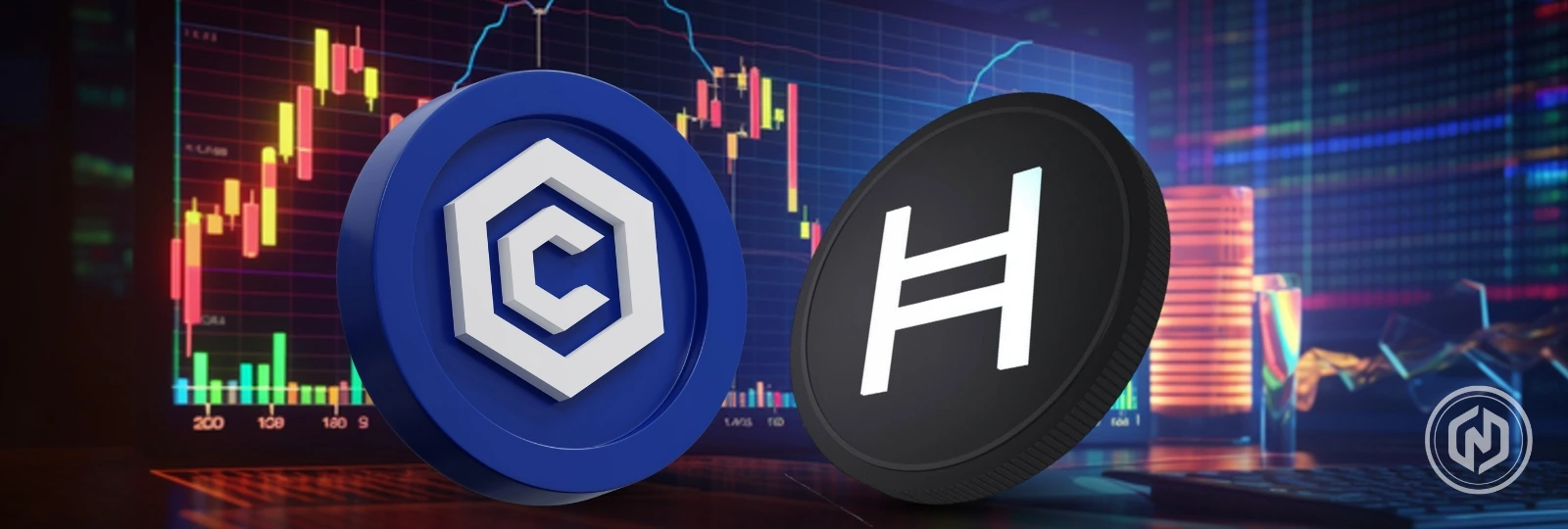What to Know:
Cronos (CRO) fuels the Crypto.com ecosystem with real-world perks and growing demand.
Hedera (HBAR) offers enterprise-grade speed, low fees, and global partnerships.
Both coins present alternatives for investors hedging against a weakening USD.
Many investors are considering cryptocurrencies as alternatives as the U.S. dollar suffers from inflation, increasing debt, and geopolitical uncertainties. Altcoins like Cronos (CRO) and Hedera (HBAR) are also becoming more well-known, even though Bitcoin and Ethereum typically garner the most attention. The Crypto.com ecosystem is supported by Cronos, and Hedera provides a quick, business-friendly network. Both coins are gaining popularity as viable choices for investors looking to hedge against a declining dollar due to their practical uses and room for expansion.
Cronos (CRO): The Powerhouse of Crypto.com
Cronos (CRO) is the native token of the Cronos blockchain by Crypto.com, one of the biggest and most well-known cryptocurrency exchanges in the world, with over 80 million users, made it. CRO is an important part of the Crypto.com ecosystem. It gives users benefits like staking rewards, lower trading fees, and special perks like cashback on Crypto.com’s Visa cards.
Why CRO Stands Out
- Recent Demand: Crypto.com’s recent partnership with Trump Media Group, which was announced today, makes CRO a key player in a $6.42 billion digital asset treasury strategy. This could make it more useful and in demand.
- Real-World Utility: CRO works well with Crypto.com’s exchange, wallet, and payment systems, making it a good choice for people who use it every day and traders. The recent buzz around ETFs has also helped its price move.
Hedera (HBAR): Enterprise-Grade Innovation
Hedera (HBAR) is the native token of the Hedera Hashgraph network. This is a distributed ledger technology that was made to be faster and safer than regular blockchains. Hedera is different from regular blockchains because it uses a Directed Acyclic Graph (DAG) and a proof-of-stake consensus mechanism. This lets it handle a lot of transactions at once (over 10,000 per second) and charge low fees (as low as $0.0001 USD per transaction).
Why HBAR Stands Out
- Enterprise Backing: A council of big companies from around the world, such as Google, IBM, Boeing, and Deutsche Telekom, runs Hedera. This gives it credibility and encourages businesses to use it.
- Real-World Use Cases: Hedera supports apps in DeFi, NFTs, and tokenization of RWA. Its partnerships with SWIFT and Kenya’s digital stock exchange show how useful it could be. Its partnership with Nvidia for decentralized AI apps makes it even more appealing.
Comparing CRO and HBAR
CRO and HBAR both have their own strengths, but they are meant for different types of investors. CRO is best for retail investors and traders who want easy access, rewards, and exposure to a consumer-focused platform like Crypto.com. Its growth is linked to the wider use of DeFi and NFTs, which makes it an altcoin that is more popular with regular people.
Investors who want to get into enterprise-grade blockchain solutions are interested in HBAR. It has institutional support and a focus on scalability, which makes it a safer bet for people who care more about long-term usefulness than short-term price changes. But since Crypto.com and CRO are so closely linked, any mistakes made by the exchange could hurt its value. On the other hand, HBAR’s large circulating supply may keep its prices from rising too quickly.
Conclusion
As the value of the US dollar falls, altcoins like CRO and HBAR are becoming excellent options for investors who want to spread their risk. CRO is a great choice for retail-focused portfolios, while HBAR’s enterprise-grade infrastructure, institutional support, and cutting-edge technology make it a strong candidate for the long term.
But neither one is sure to win. Investors should do their own research, figure out how much risk they can handle, and think about spreading their money across different types of assets to reduce volatility.
Also Read: Will Hedera benefit from the SWIFT Blockchain Pilot Program?



